Planning an epic American road trip? You should familiarise yourself with the country’s road signs and markings before getting behind the wheel.
US traffic signs follow federal standards set by the Manual on Uniform Traffic Control Devices (MUTCD) meaning there is consistency throughout America. There are still some variations from state to state typically involving state-specific regulations or ordinances rather than major changes in the design or meanings of the road signs.
Here’s a guide to the general meanings of shapes and colours used in American road signs:
- Red and white octagonal signs indicate a mandatory stop, such as stop signs, requiring drivers to come to a complete halt before proceeding.
- Red and white triangular signs are warning signs alerting drivers to potential hazards, such as sharp curves, pedestrian crossings, or deer crossings.
- Red and white circular signs indicate regulatory rules that must be followed, such as speed limits, no U-turns, or no entry.
- Blue and white circular signs provide mandatory instructions, such as turning left, using a specific lane, or requiring snow chains in winter conditions.
- Yellow diamond-shaped signs serve as general warning signs, cautioning drivers about road conditions, school zones, or upcoming intersections.
- Green rectangular signs provide directional guidance, including highway exits, mile markers, or city destinations.
- Blue rectangular signs indicate services and facilities, such as rest areas, hospitals, or gas stations.
- Brown rectangular signs highlight recreational areas or points of interest, such as national parks, scenic routes, or historic sites.
- Orange diamond or rectangular signs warn of temporary conditions, including construction zones, detours, or roadwork ahead.
Essential American Road Signs
Yield
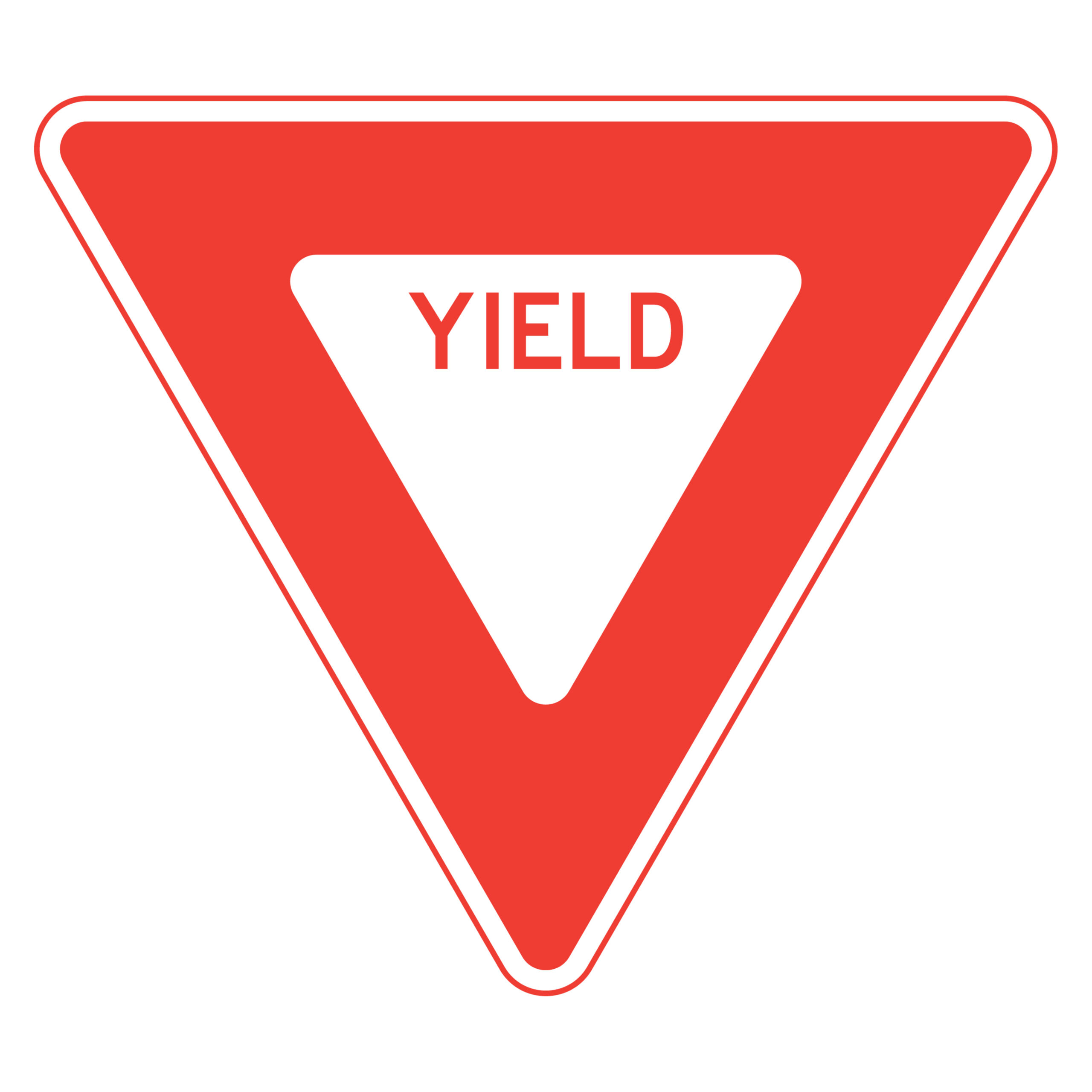
This is a regulatory traffic sign instructing drivers to slow down
Speed Limit

Drivers must not exceed the limit that the sign states.
Keep Right
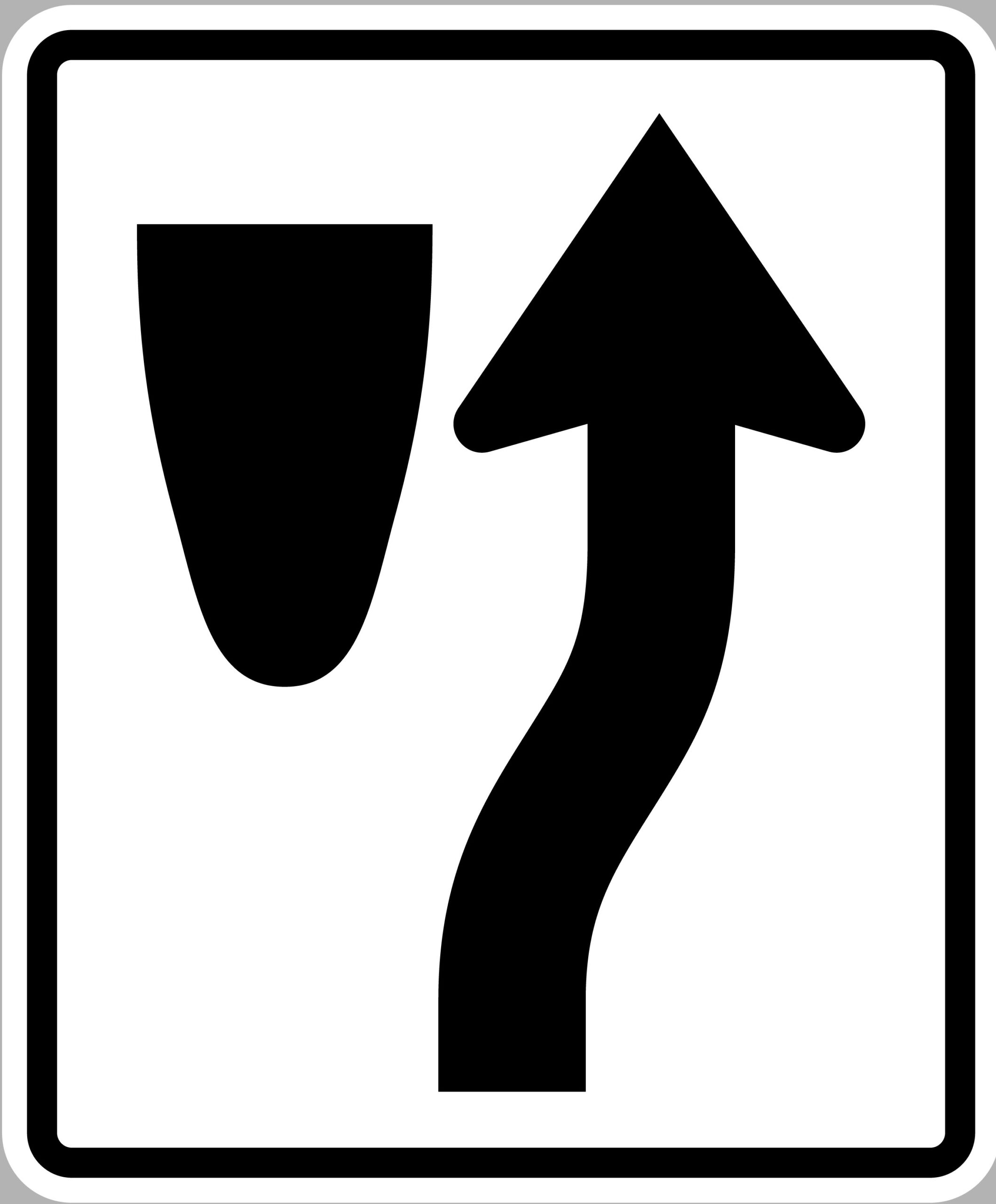
Keep right signs are used in locations where drivers must pass only on the right of a roadway feature or obstruction.
Narrow Bridge
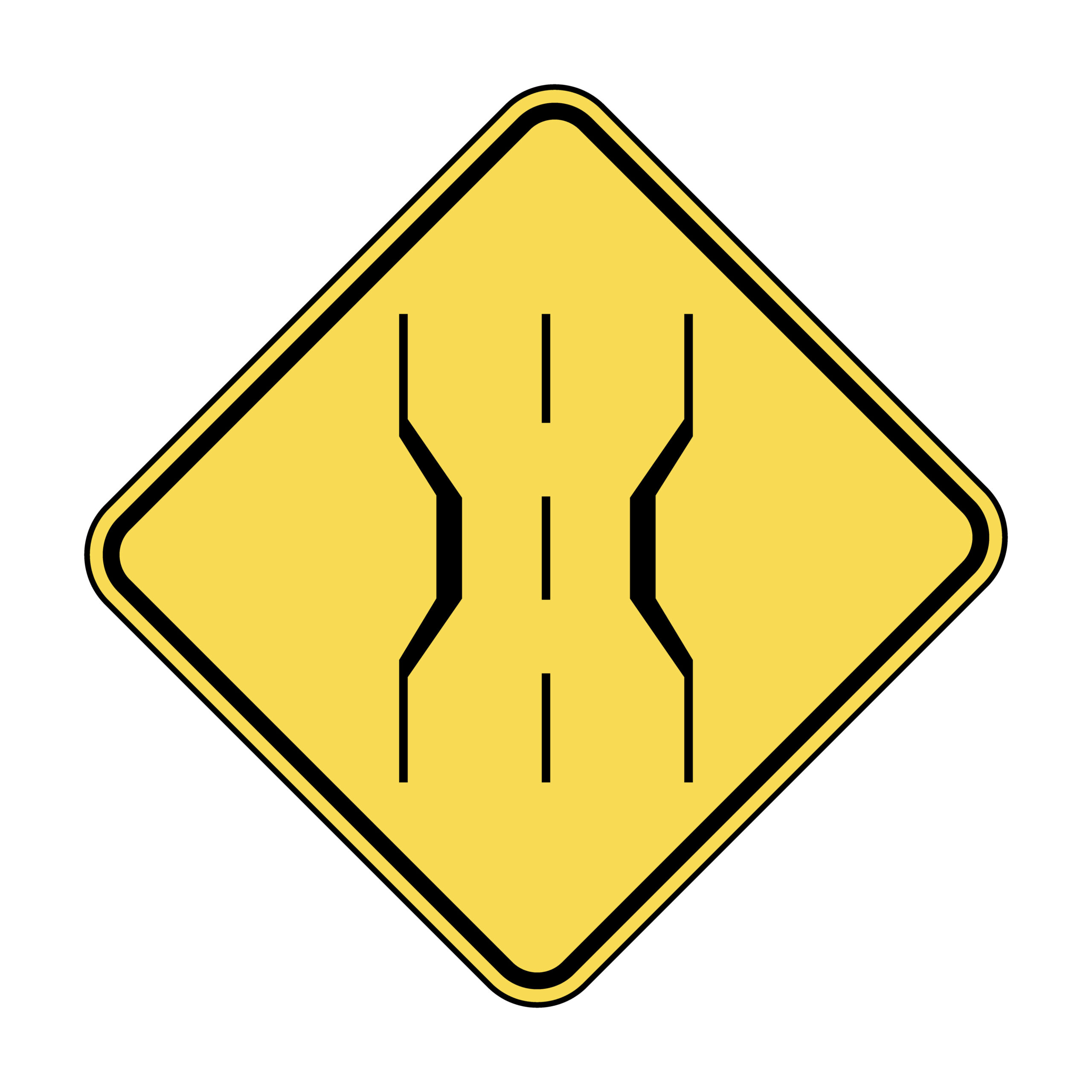
This sign tells you the bridge ahead is narrower than the road you are currently on. When crossing a narrow bridge, slow down and watch out for oncoming traffic.
Divided Highway

This sign warns you a median or divider is coming up and that traffic will now be separated into two directions.
Drivers should stay on their side of the road and be aware of potential lane shifts.
Interstate

An interstate is a highway that connects two or more states and interstate signs help drivers travelling across state lines. The signs indicate the route number of the highway. They also state the direction and state name.
Side Road
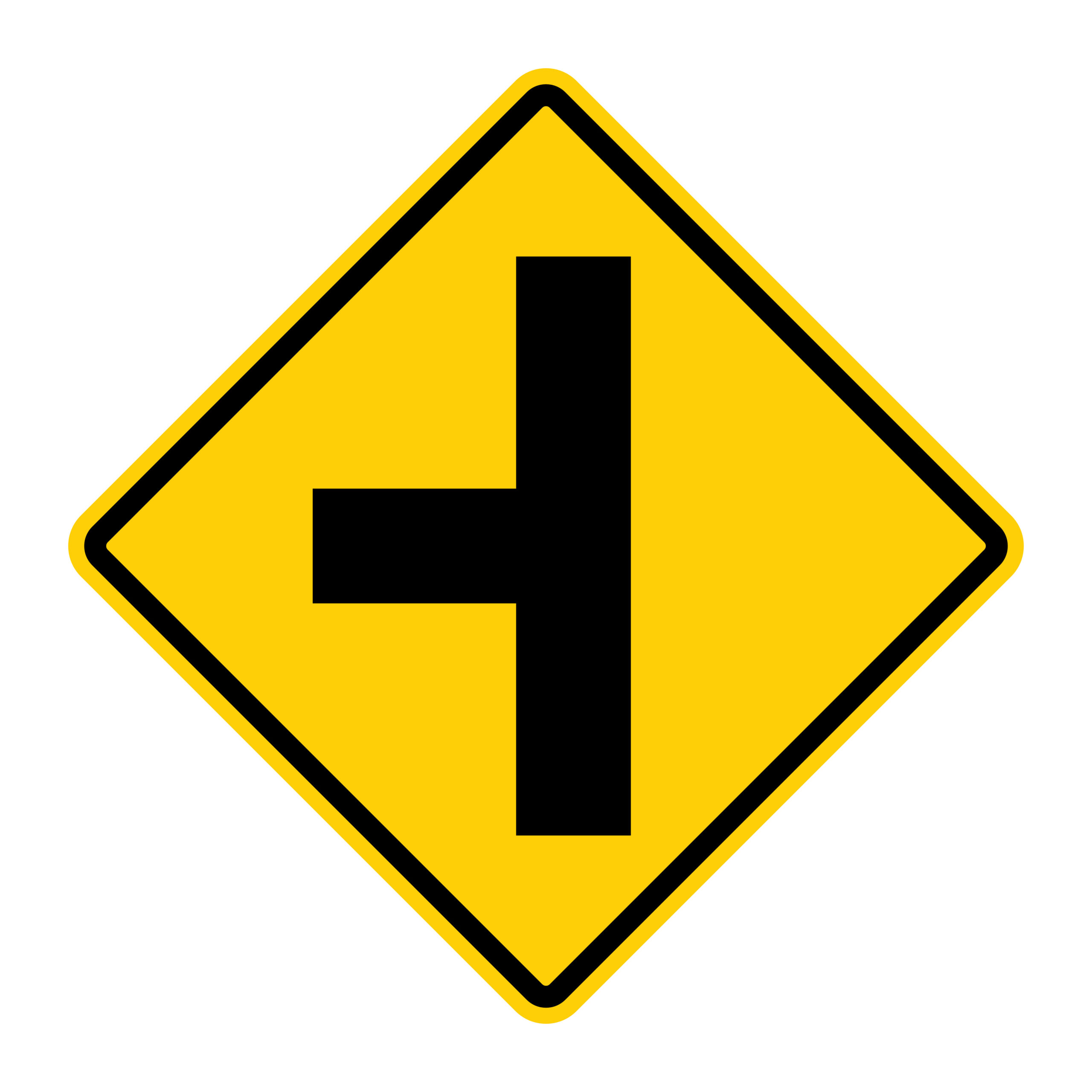
Side road signs indicate there is a side road that enters the highway, typically from the right. The entry side will be indicated on the sign – in this case it is from the left. The sign allows you to be aware of traffic entering or exiting the highway.
Merge

Merge signs warn that two separate roadways will converge into one lane ahead. The sign indicates which lane is merging into the other, in this instance, the left lane is merging into the right. Drivers on the highway should be aware of merging vehicles. Merging vehicles must yield to traffic on the main highway.
Slippery Road
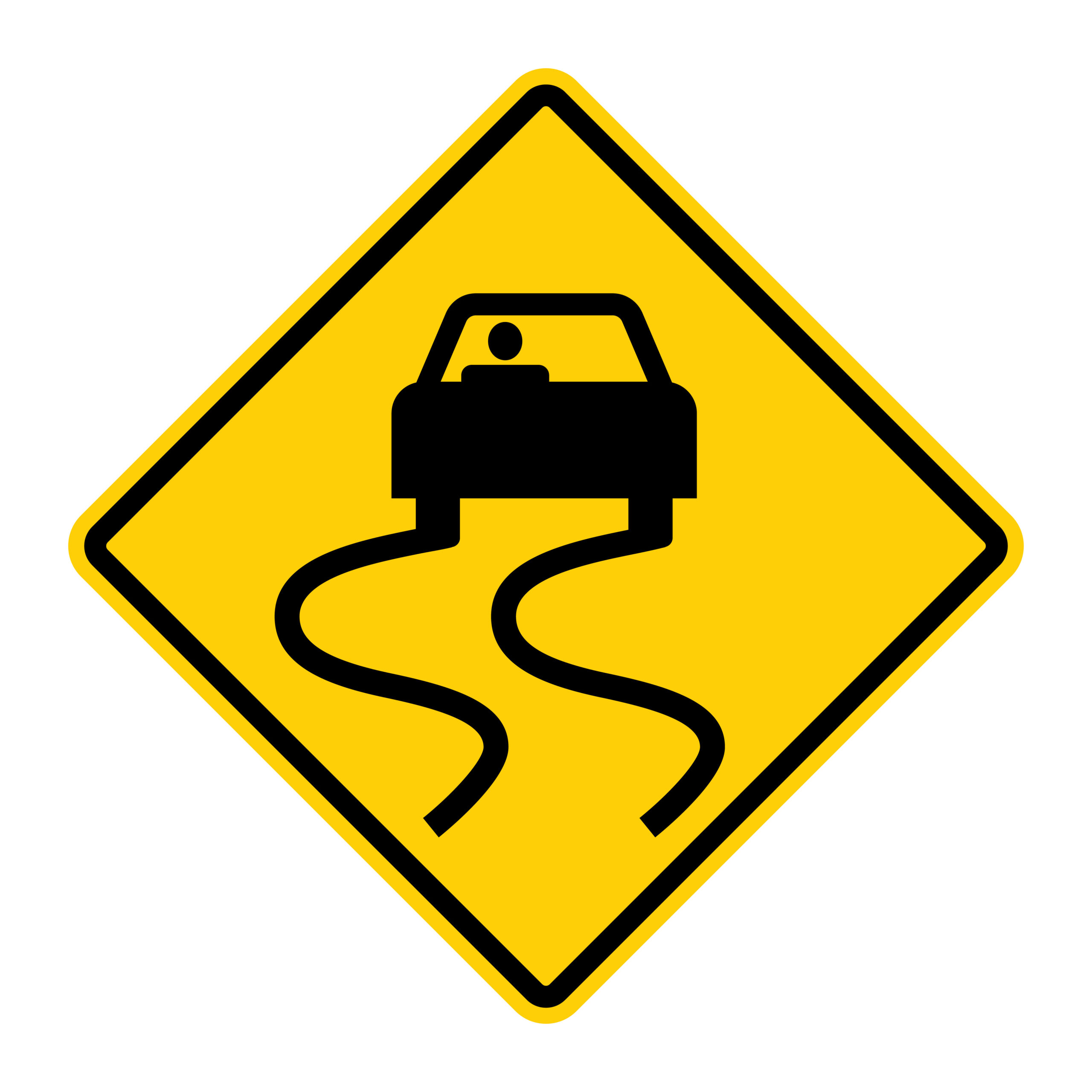
This is a warning sign and is posted in areas where slippery conditions might exist, near bridges and overpasses too as these are the first to freeze and the last to thaw in cold weather.
Dip
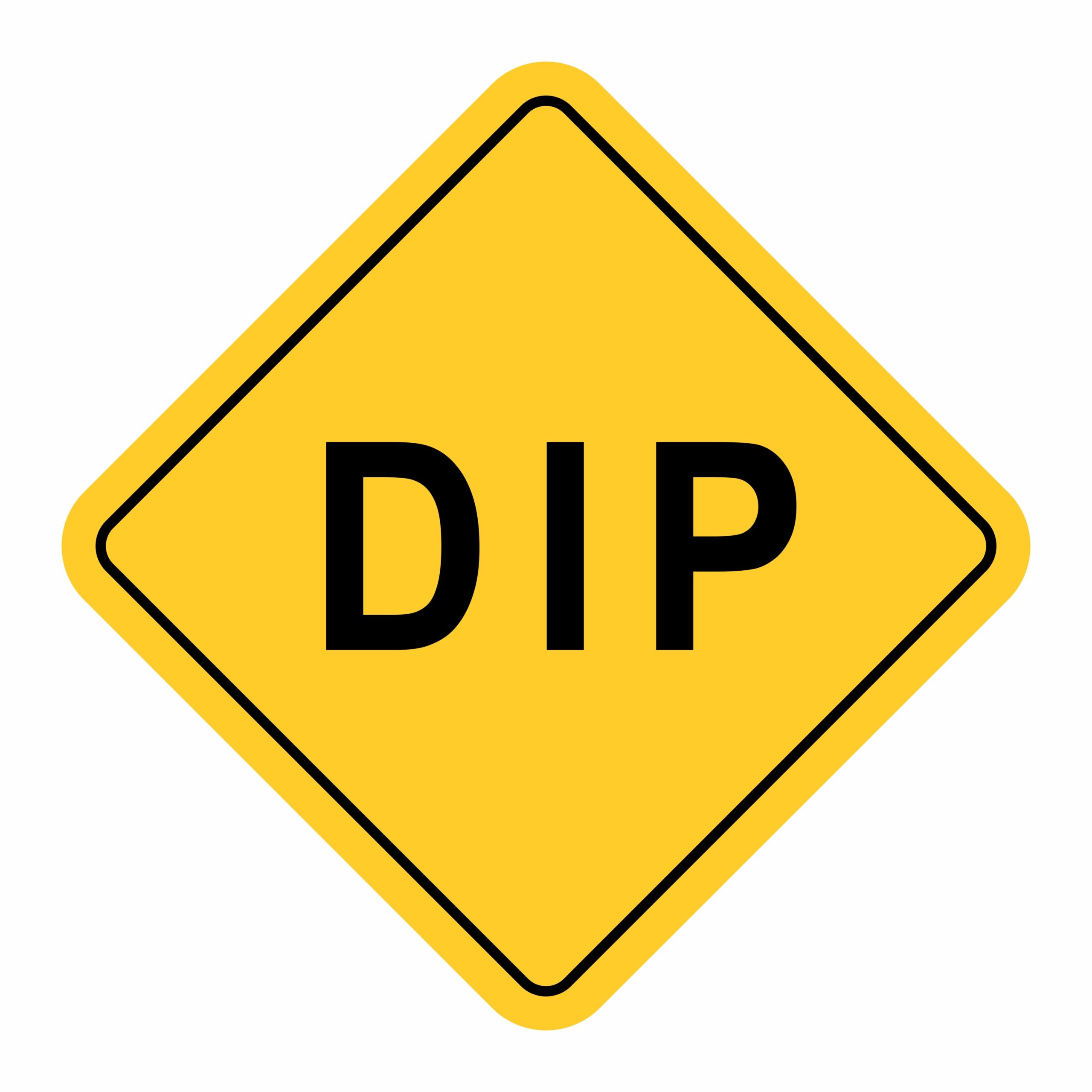
The dip sign alerts drivers to a dip or low spot in the road ahead. To avoid potential hazards, drivers should slow down when approaching this area.
After heavy rainfall, dips can fill with water, increasing the risk of hydroplaning.
Railroad Crossing
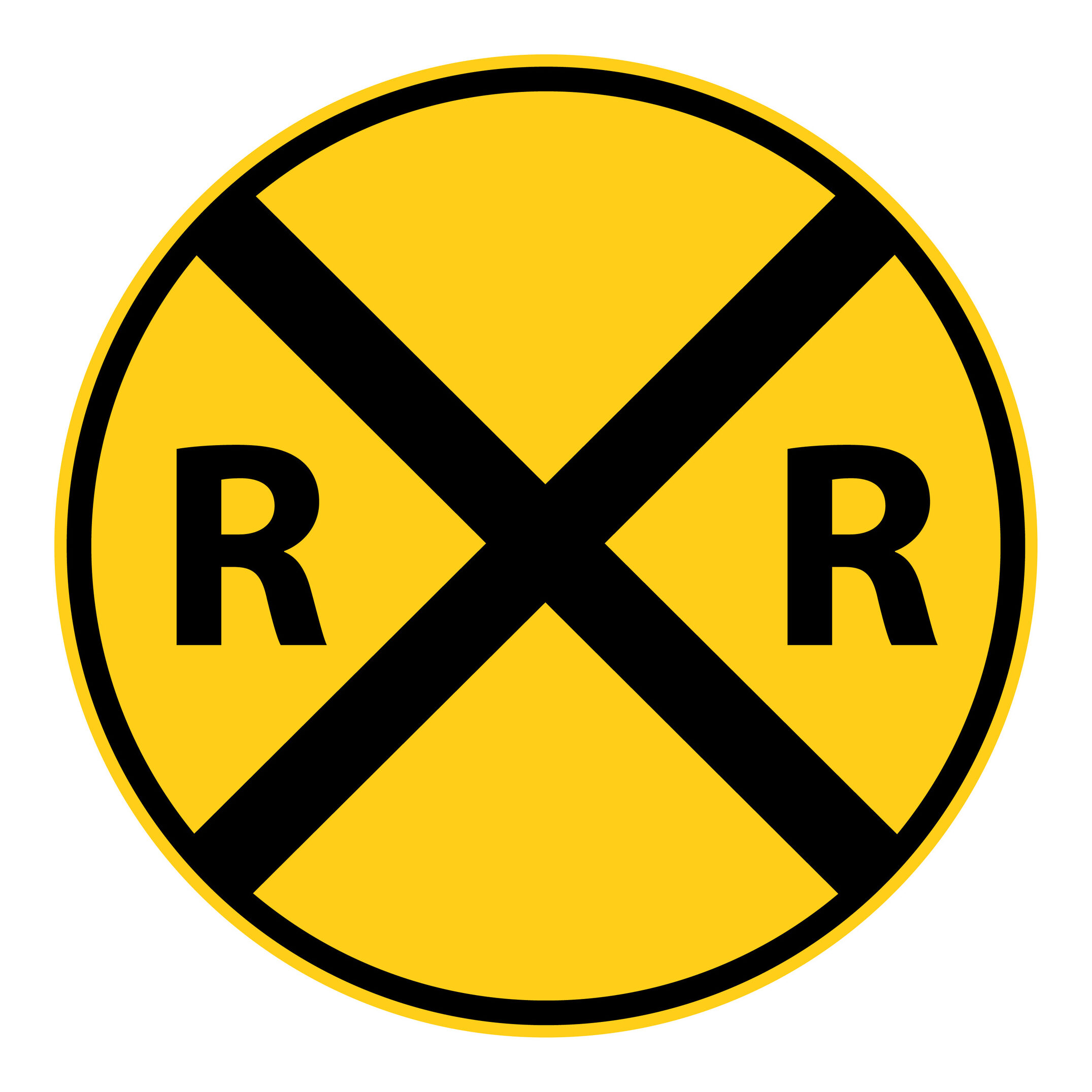
The railroad crossing warns drivers of upcoming train tracks. You should stay alert, check for approaching trains in both directions and be prepared to stop if necessary. Trains can pass at any time, so never stop on the tracks.
Crossroads
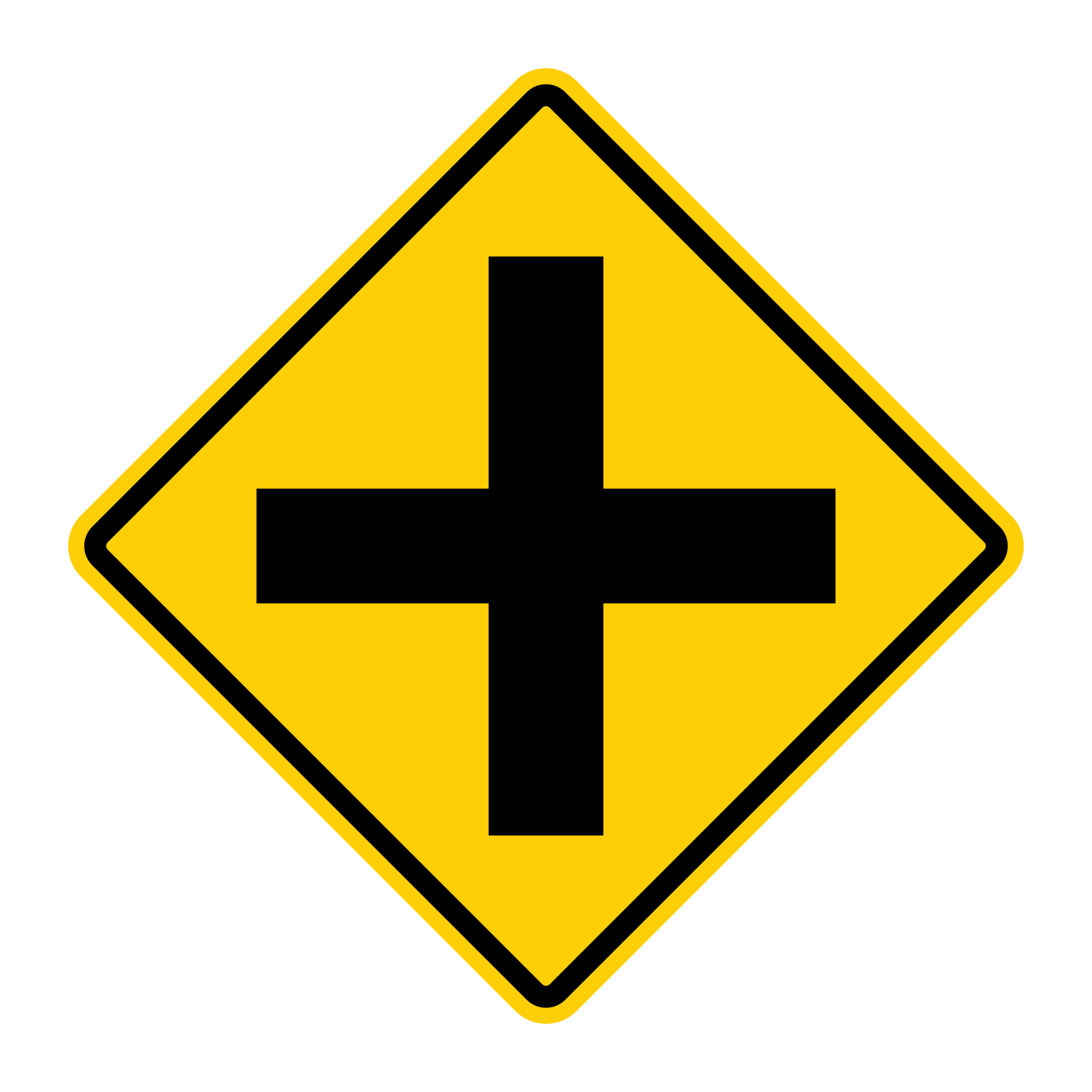
This sign warns motorists of the presence of an upcoming four-way intersection and the possibility of turning or entering traffic.
Stop Sign Ahead
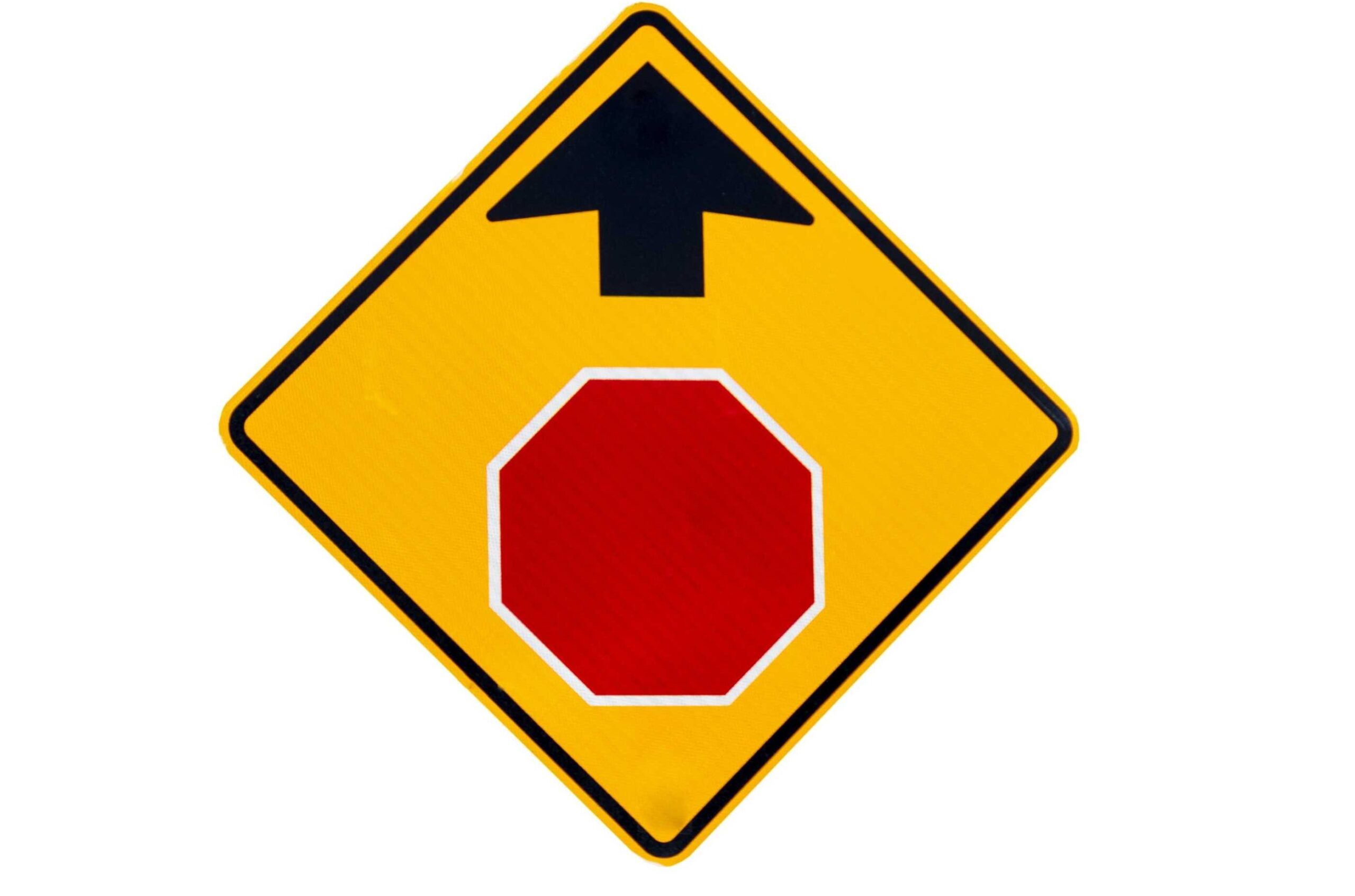
The red octagon inside the yellow diamond symbolises a stop sign and warns drivers to begin slowing down in preparation for the stop sign ahead.
Intersection Lane Control
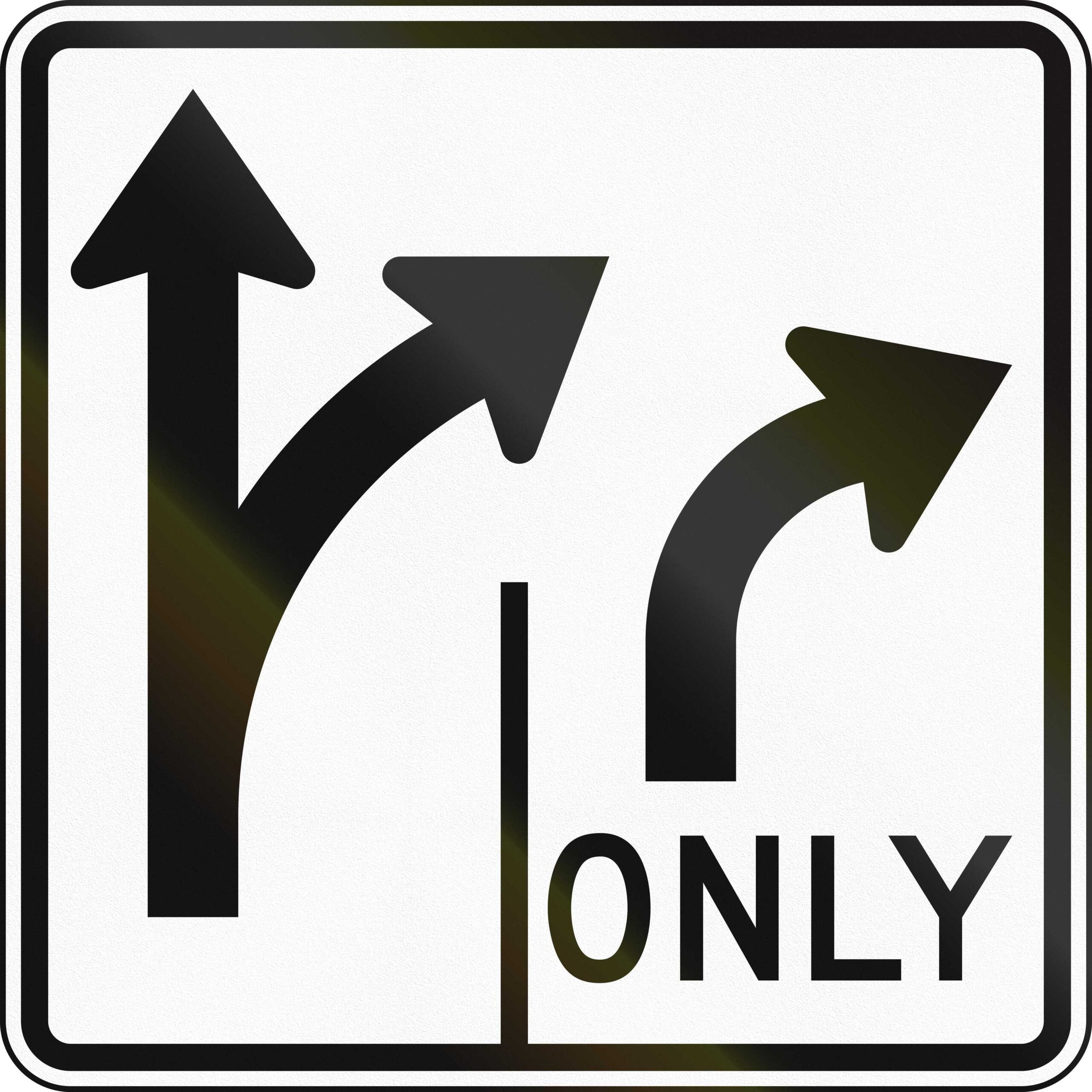
This sign appears at intersections to guide drivers on roper lane usage before turning or carrying on straight. This particular sign tells drivers the left lane allows for a right turn and for continuing straight, but the right lane is a right turn only.
American Road Markings
Road markings and lines in America are generally the same throughout the country thanks to the MUTCD. However, there might be some regional variations in terms of colours, designs, or additional markings (for example, in certain cities or special zones), but the basic principles for yellow and white lines, lane markings, and stop lines are consistent nationwide.
- Single yellow solid line: No passing allowed.
- Double yellow sold line: No passing in either direction. Only drive to the left of double solid yellow lines if you are turning left to enter/leave a road, or if your lane is blocked/closed and signs indicate you must drive on the other side of the lines.
- Broken yellow line: You may cross the line to pass a vehicle in front, when safe.
- Solid yellow line alongside broken yellow line: If the solid line is on your side, you cannot pass. If the broken line is on your side, you can pass if it’s safe to do so.
- Single white solid line: Discourages lane changes but is not illegal, only cross a single solid white line if you are avoiding a hazard.
- Double white solid line: No lane changes allowed.
- Broken white line: Lane changes are permitted when safe.
- Red lines: Used in some states to indicate bus lanes or emergency zones.
Staying attentive to the road signs and road markings will help reduce confusion and will mean you are more confident on the roads. Stay alert and drive responsibly and in line with guidance provided by the signs and markings to avoid penalties.
For additional peace of mind and a smoother driving experience, consider purchasing car rental excess insurance to protect yourself in case of any unexpected situations.

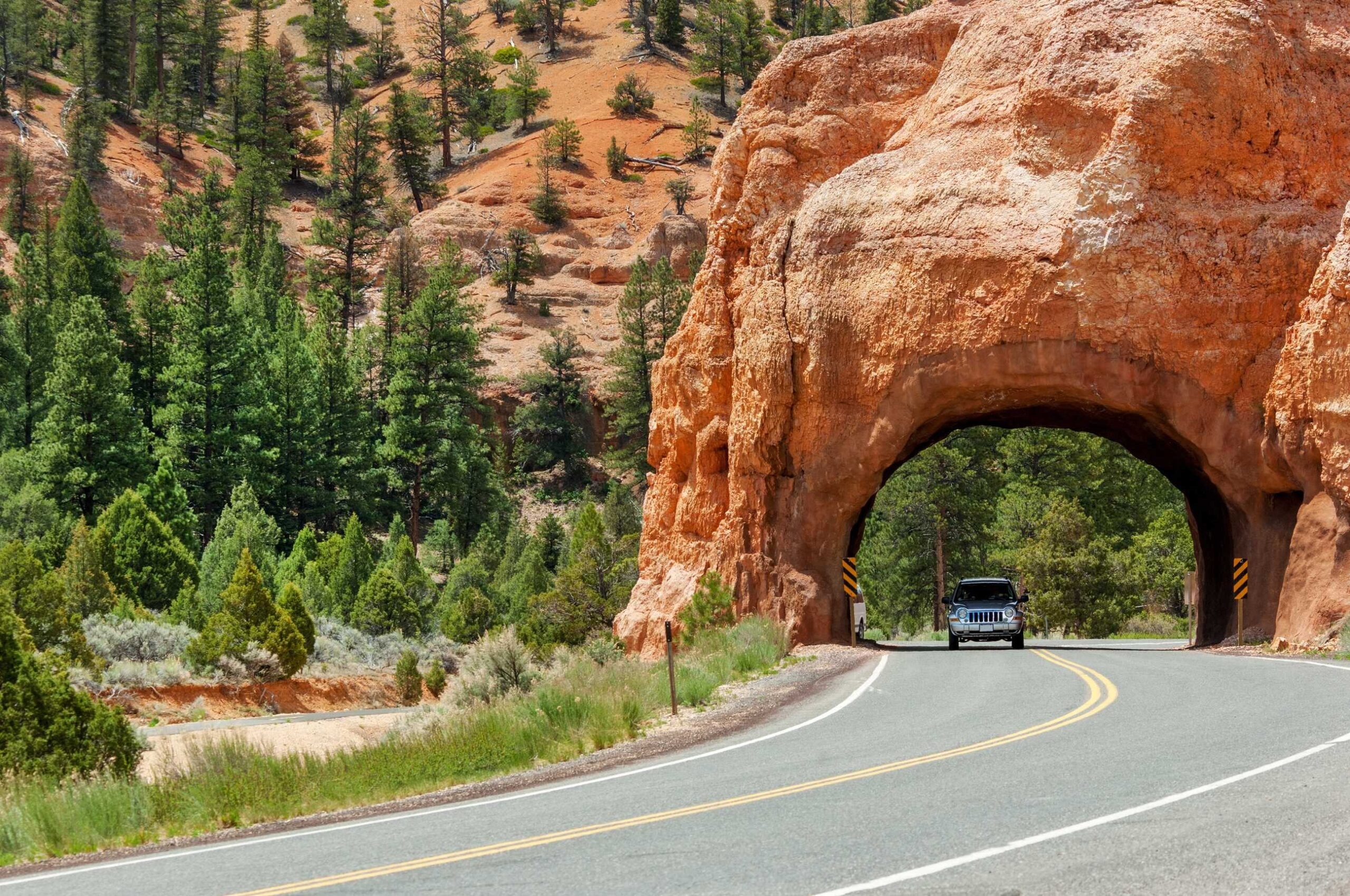
Comments are closed